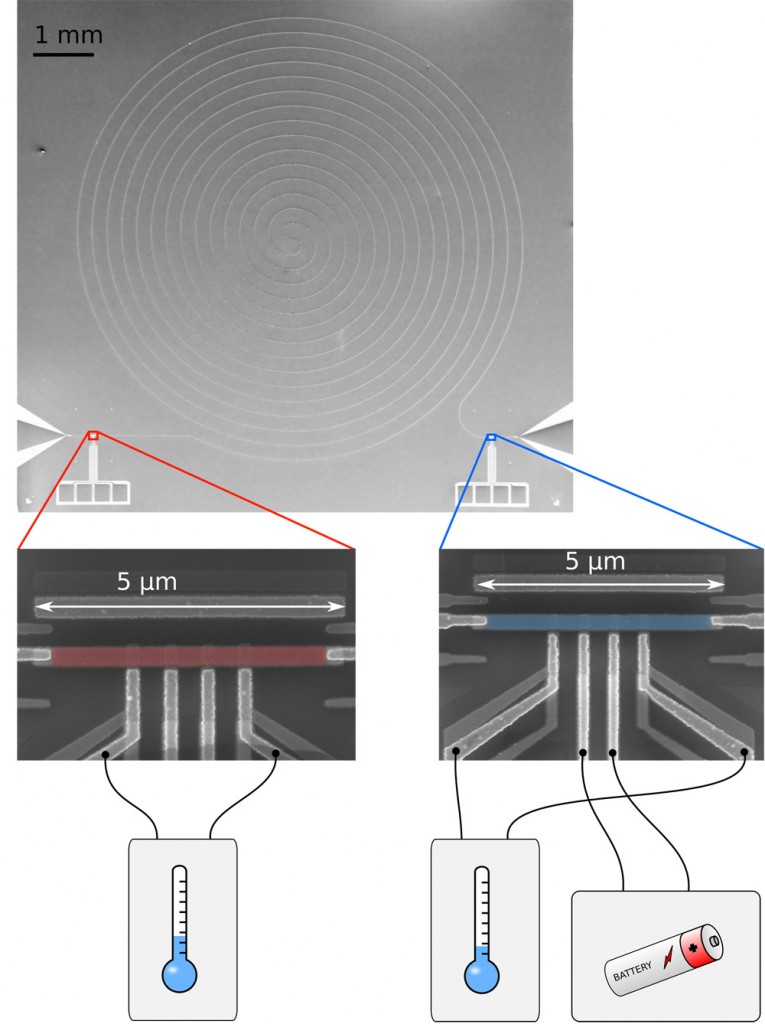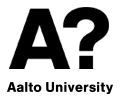Nature Physics has just published our paper titled Quantum-limited heat conduction over macroscopic distances. Here, we report an improvement in the range of this kind of maximally efficient heat conduction by a factor of 10,000 taking it up to a meter. This brief video tells pretty much what is going on:

Artistic impression of quantum-limited heat conduction of photons over macroscopic distances. Credit: Heikka Valja.
The quantum limit
What quantum-limited heat transport actually means? In brief, it corresponds to the maximum power that can flow in a single heat conduction channel. Thus it is an upper limit. You can transport less power if your channel is bad, but you cannot transport more.
A single heat conduction channel can be made in many ways, but basically it means that in the transverse direction of the channel, the profile of the heat carrier is fixed. In the longitudinal direction, a continuum of wavelengths is possible.
Previous experiments
Although in previous experiments quantum-limited heat transport has been observed for lattice vibrations, or phonons, electrons, and electromagnetic fluctuations, the achieved distances have been very short compared with our macroscopic world. The previous record in the distance was roughtly 50 micrometers achieved by the research group of Prof. Jukka Pekola (Aalto University) by connecting two resistors into a loop made out of superconducting aluminum wires.
Our device
In contrast, we used microwave photons flying in a superconducting transmission line as the heat carriers. Photons are generally know to be good heat carriers over long distances.
Here is a schematic image of our device and the measurement scheme:

Device structure and simplified measurement scheme. A superconducting meandering transmission line on a silicon chip is terminated at both ends by micron-sized resistors. A pair of tunnel junctions at each resistor is used to measure the temperatures of their conduction electrons. The temperature drop at the left resistor due to active cooling of the right resistor is used to extract the thermal conductance between the two resistors. This quantum-limited heat conduction arises from the exchange of microwave photons flying in the transmission line. Credit: Matti Partanen.
In addition to minimizing the effect of accidentally absorbed microwave photons into the transmission line owing to the use of a superconductor, we also needed to carefully engineer the tiny resistors at the ends of the line. These resistors are the two bodies that exchange heat through the line. In particular, we matched the resistance of both resistors to the so-called characteristic impedance of the line, that is, to 50 Ω. Because of this matching, most of the incoming photons got absorbed at the resistors taking the heat conduction to the quantum limit. (See this paper for first theoretical considerations of the phenomenon.)
Here is a close image of the resistor:

Atomic-force microscope image of one of the resistors in the device used to demonstrate quantum-limited heat conduction over macroscopic distances. Note that there are excess inactive copies of some of the structures owing to the employed fabrication methods. Credit: Matti Partanen.
What can this be useful for
I have been really excited about the development of the superconducting quantum computer and large recent efforts in building also other quantum technological devices. Almost all single-quantum devices need to be precisely initialized in the beginning of their operation. Potentially engineered resistors could be used to carry out such initialization and then decoupled from the device. Here are some thoughts on how one could implement this in practice in the superconducting quantum computer.
Finally here is an articstic image to inspire you about microwave heat transport:

Artistic impression of quantum-limited heat conduction of photons over macroscopic distances. Credit: Riikka Maria Partanen.
Acknowledgements
We are really lucky that we are able to implement our ideas and make your dreams come true. There are many institutions and people to thank, but being breif, I would like thank the European Research Council (ERC) for the Starting Grant that I used to build up my laboratory. I think that ERC is the best thing that has happened to European science. It regards excellence as the sole evaluation criterion. I am also very thankful for many research grants from private foundations and from the Academy of Finland, including the COMP Centre of Excellence that my group is part of. A break point in my career was in 2007 when Academitian Risto Nieminen decided to promote me as one of the PIs in COMP. I also thank Prof. Jukka Pekola for introducing me to the facinating field of experimental low-temperature physics and mesoscopic heat transport.
Last but not least, I thank my awesome QCD group and especially M.Sc. Matti Partanen and Dr. Kuan Yen Tan for their years of hard work on these results!


It’s a real pleausre to find someone who can think like that